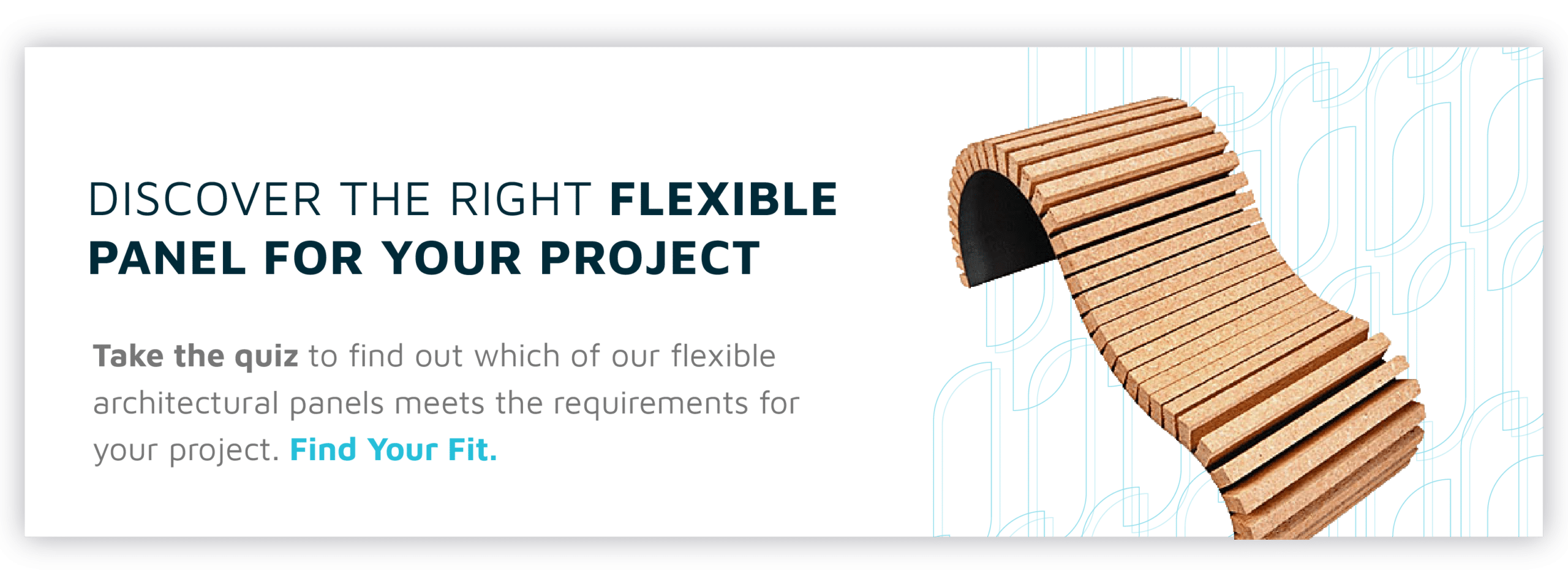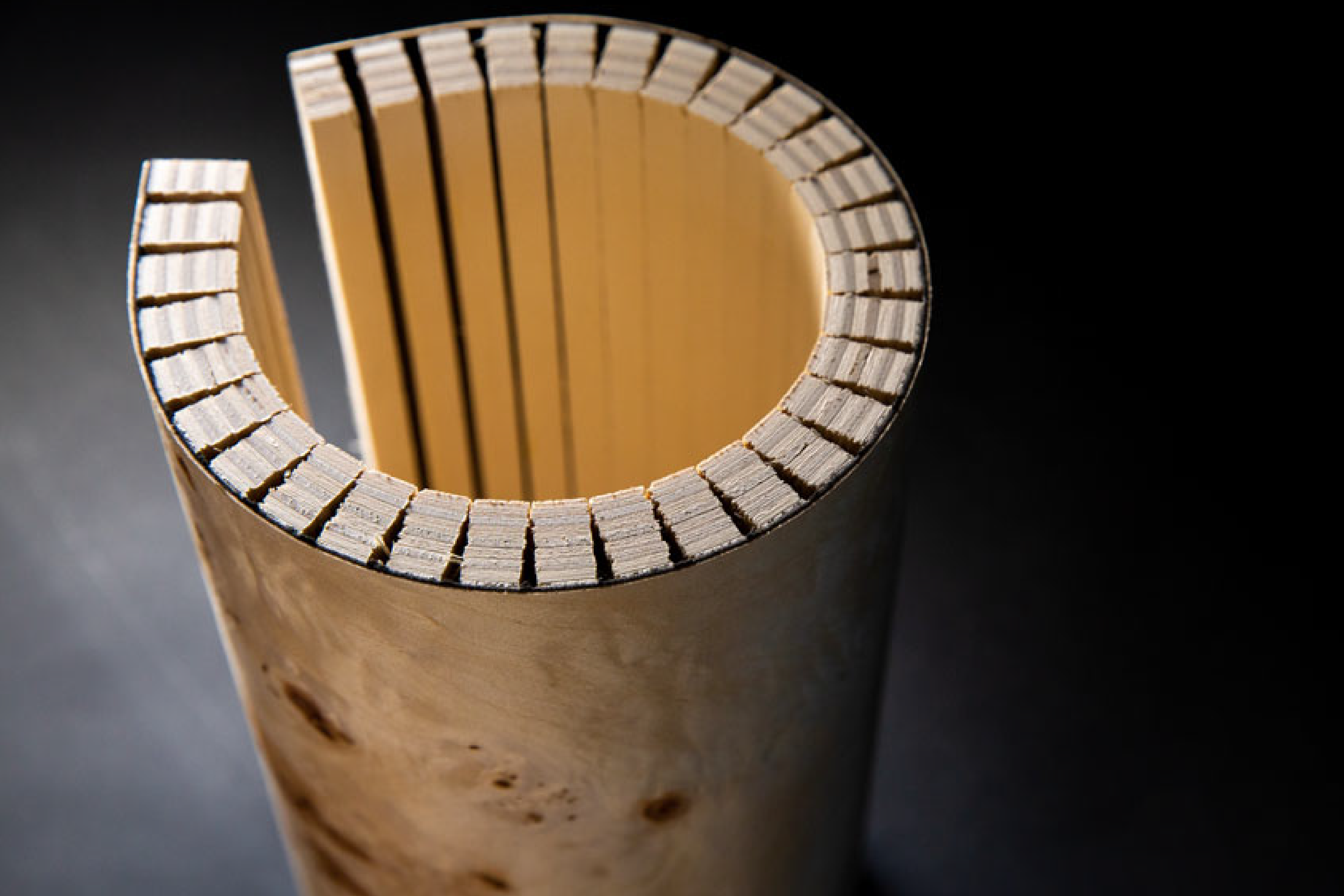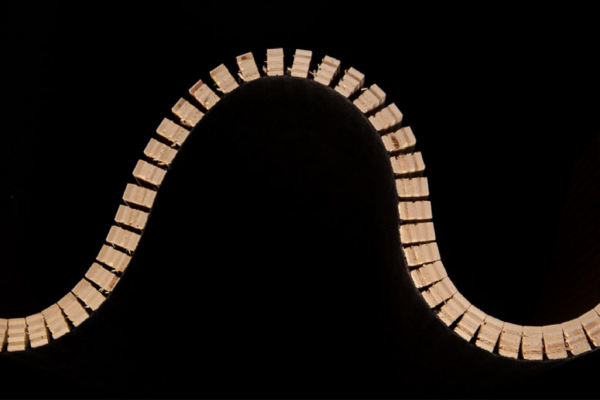
Why Kerfed Wood Should be Your Choice for Flexible Architectural Panels
February 6, 2023Ever wonder where we got our company name from? Kerfkore is based on the word kerf, which is a technique in woodworking used to create bends and curves. For many, woodworking is associated with straight and traditional designs. But with kerfing, we can create elegant, dynamic, and modern woodworking that defies expectations. So, where did kerfed wood originate and why should it be your choice when working on your next curved project?
What is a kerf cut?
A kerf cut refers to the resulting slot when a cutting process removes material. Traditionally, a kerf was defined as the width of a saw blade and how much wood was removed, before other methods and materials were used.
In woodworking, when enough kerf cuts are used in succession and spaced appropriately, it’ll create wood that is flexible. It works sort of like a bendable straw. The creases in the bendy part of the straw allow the straw to flex, without causing too much stress on the material.
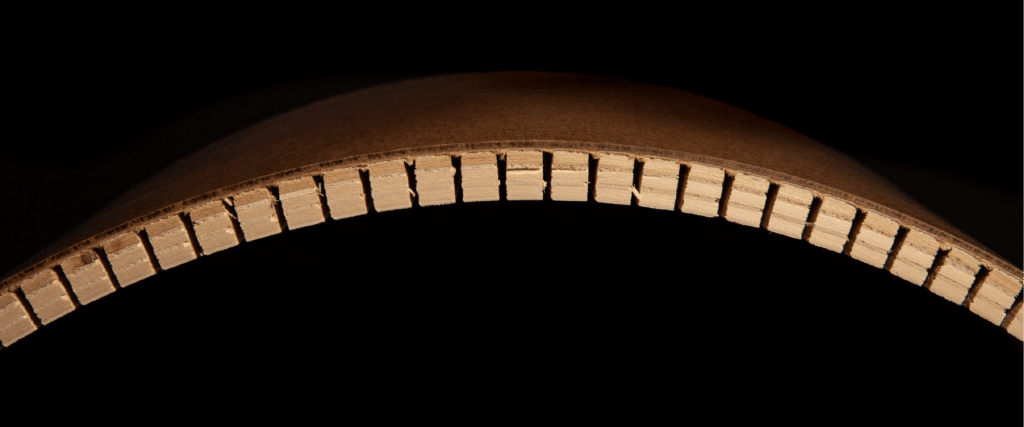
It’s tough to tell exactly where and when the kerf cut was invented. Woodworking is one of humanity’s oldest industries, and the kerf-cutting technique, by all records, seems like it’s been around for a while. According to the Oxford English Dictionary, the earliest known use of kerf dates back to the Old English period.
Why kerfed wood?
While it’s an age-old technique, it can be used to create incredibly modern shapes. The elegant curves of wooden instruments like grand pianos and acoustic guitars can be executed with kerf bending, as well as archways, curved ceiling baffles, and a plethora of other eye-catching architectural designs.
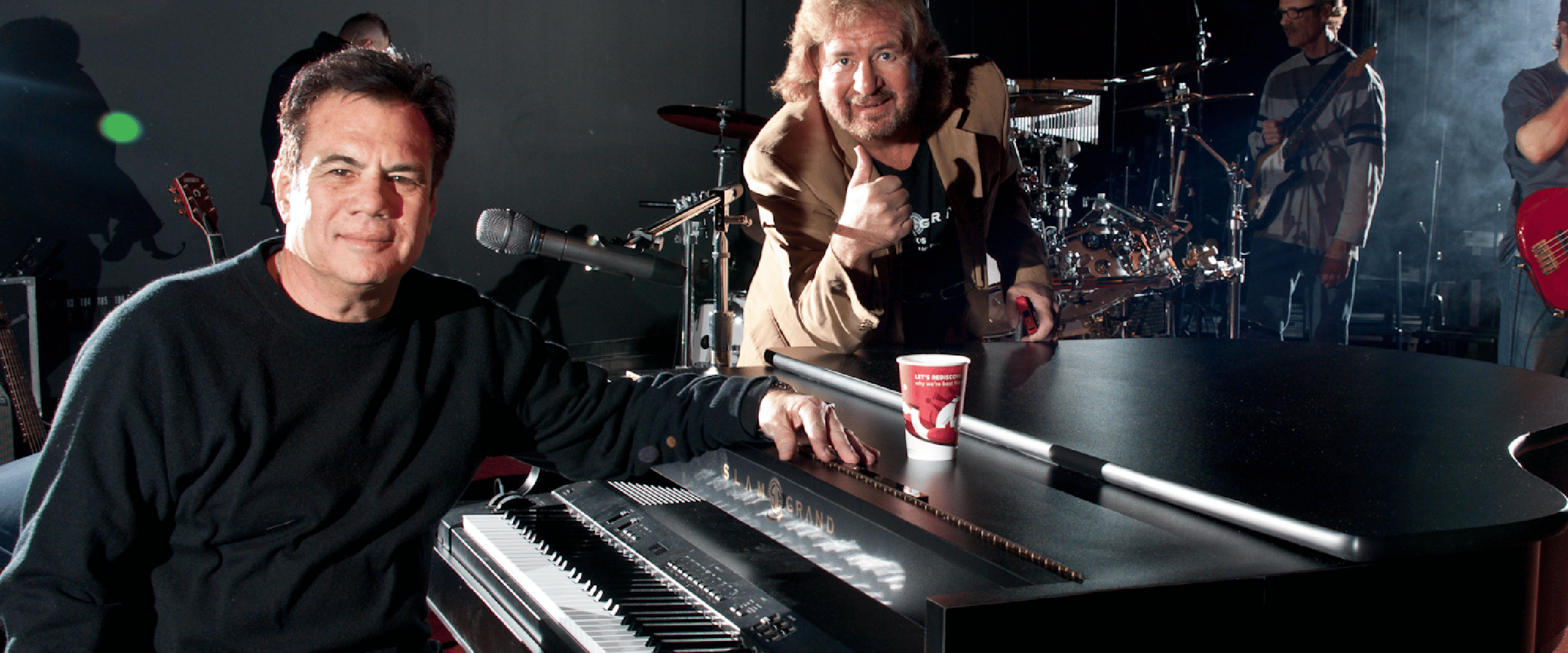
The possibilities are endless. The psychological benefits of arches and curves have been well-documented. There is something natural and welcoming about curves, which kerfing allows us to achieve with wood because it creates stability and consistency.
There are some alternatives to high-quality kerfed wood such as using thinner, bendable wood like bending luan. But it’s not without its drawbacks – we wrote an article comparing bending luan to Kerfkore, but here are the quick takeaways.
- Bending luan is known for its high variation in quality and bendability. Some sheets of luan will bend further and be less durable than others, potentially creating a misadventure of trial and error for fabricators trying to achieve a desired bend radius.
- These quality issues also contribute to the overall time spent on the project as well as potentially higher costs. In general, luan plywood is cheap, but fabricators may lose multiple sheets due to breakage.
For a lot of projects, it’s hard to replace the dependable, high-quality wood that can be achieved with kerfed wood. It allows you to create complex and more demanding designs such as S-shaped curves, where bending luan can struggle to do so.
Real-World Applications of Kerfed Wood Panels
- Reception desks
- Museum displays
- Trade show booths
- Retail displays
- Retail interiors and displays
- Pre-fabricated and mobile homes
- RVs and camper vans
- Restaurant booths
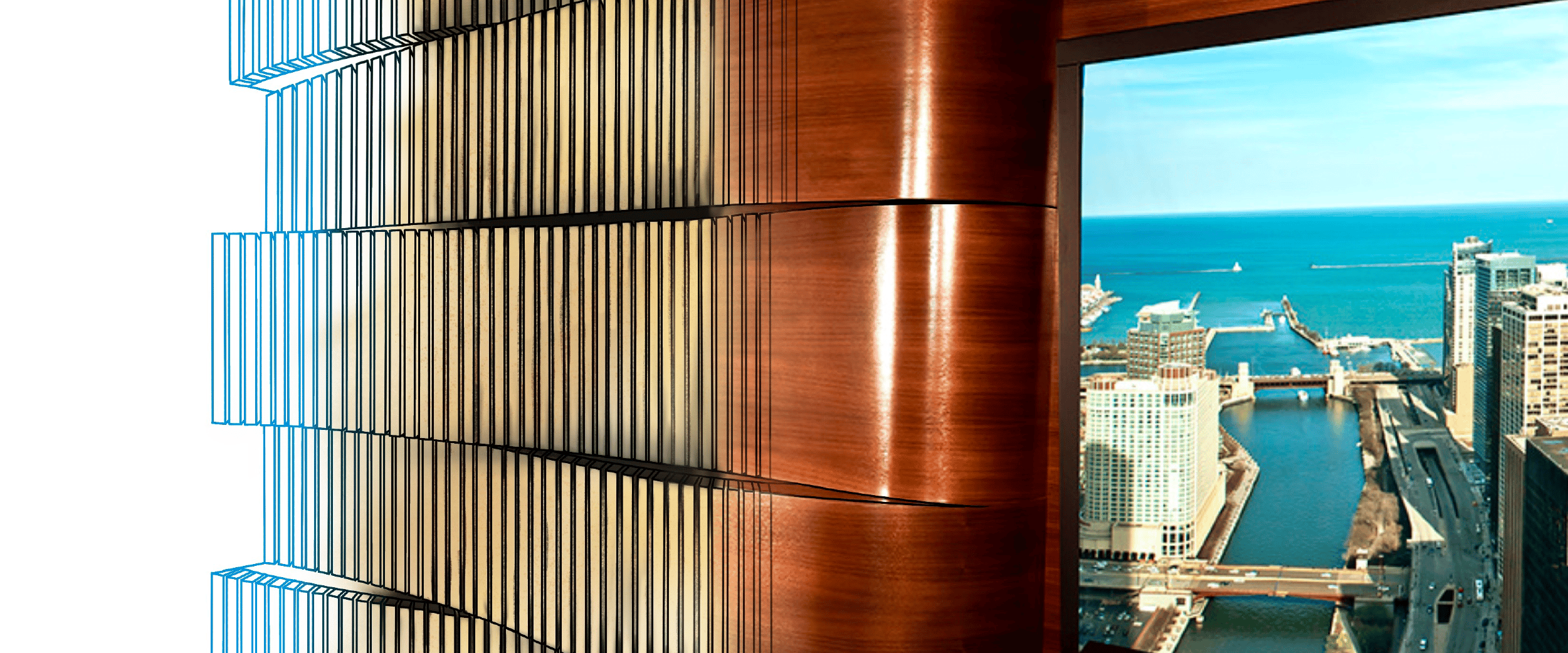
Self-Kerfing vs. Pre-Engineered
At Kerfkore, we specialize in creating pre-engineered architectural panels that are specially built to be quickly implemented, but DIY kerfing is a popular and viable option for small projects.
If you’re planning on self-kerfing, be aware that as the scale of your work grows, so will the demands on your materials, time, and costs. That’s where pre-engineered kerfing really shines. It allows you to focus on putting together the rest of your project, instead of tying up time, equipment, and manpower on the tedious work of kerfing.
Plus, with pre-engineered kerfed wood you can rely on precision cutting and high-quality materials built to your exact needs, which is often required for larger, professional works. On the other hand, DIY kerfing is a challenging process that can result in wasted wood, telegraphing, and uneven surfaces, if not executed properly.
Our pre-engineered kerfed wood also eliminates the bending radius guessing game, you’ll know exactly how much bend is possible before incorporating the wood into your project. For projects that call for multiple panels, with a uniform bend – this is an integral feature.
That’s not to say we’re anti-DIY, but when a project calls for professional precision, quality, and your time is limited, then pre-engineered kerfed wood like Kerfkore is your best bet.
Frequently Asked Questions About Kerfed Wood Panels
How can I finish kerfed wood panels?
It depends on the facing of your kerfed wood panel! At Kerfkore, all of our panels can be finished with a high-pressure laminate or veneer. Timberflex can be painted or stained, and our Flexboard and Econokore panels can be painted.
What is the tightest bending radius kerfed wood panels can achieve?
Depending on the panel you choose, the tightest bending radii that Kerfkore panels can achieve range from 3.5” to 12”.
Why should I use pre-fabricated kerfed wood panels over bendable plywood?
Bendable plywood is not always reliable. The quality can vary board to board, resulting in broken panels and trial-and-error. A pre-fabricated kerfed wood panel from Kerfkore provides consistent, dependable results every time.
See the Quality of Kerfkore in Action
Kerfing is a timeless technique. One that we think we’ve honed into a combination of art and science to deliver some of the most aesthetically pleasing architectural panels a designer or fabricator could hope for. Request a sample of Kerfkore and experience the high-quality pre-engineered kerfed wood for yourself.
